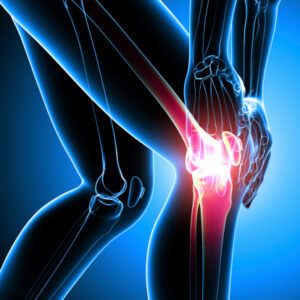Improving Form and Function
to Prevent Patella Knee Pain
 Do you struggle with Chondromalacia Patella Knee Pain? Are you looking for exercises you can do safely to reduce pressure and prevent patella rubbing so you can move, be active, healthy, and pain-free?
Do you struggle with Chondromalacia Patella Knee Pain? Are you looking for exercises you can do safely to reduce pressure and prevent patella rubbing so you can move, be active, healthy, and pain-free?
I received this question from a fan of my Knee Cap Dance Exercise Video on YouTube: “Aliesa, please explain how the kneecap dance exercise helps for Chondromalacia patella. In addition to strengthening quads and not locking the knees, how can I use this exercise functionally to prevent patella rubbing?” Thanx, Samreen.
This is an excellent question! Understanding the importance of good form and function to improve balanced muscle development will keep the kneecap gliding in its groove and can help reduce or eliminate patella knee pain. For ANY exercise you do, if you don’t understand the value or importance of doing it, there is no motivation to stick with your recommended exercises, or strive to improve your technique. But somehow PAIN is usually a good motivator to pay better attention to the body and start making the appropriate changes to feel better.
Since pressure between the patella and thigh bone is minimal when the knee is straight or only slightly bent, the Knee Cap Dance exercise can play an important role in learning how to find and use the right muscles up the front of the thigh to stabilize a straight leg without “locking” the knee.
First, it’s about muscle balance. There are 4 muscles that make up the Quadriceps group on the front of the thigh. If either the medial (inside) or lateral (outside) part of the Quad fires first, it will pull the kneecap that direction, (which increases pain and friction because the kneecap is not tracking properly in its groove!) So one important part of the Knee Cap Dance exercise is to improve your muscle firing pattern to get BOTH the medial and lateral parts of the Quad muscle to fire at the same time to pull the knee cap straight up – tracking safely in its groove.
Re-training your muscles to do this is easiest in a non-weight bearing position, which is why I’m a fan of the Kneecap Dance exercise. But once you understand the benefits of kneecap dance exercise and have control over your muscles, the goal is then to put this movement into practice and USE it during all other “leg” exercises to help stabilize your knee joint without “locking” the knees to prevent patella knee pain.
Another important aspect of the Knee Cap Dance exercise is to understand the role of the Hamstring muscles along the back of the thigh. If you’re prone to “locking” your knees, you are jamming the patella against the knee joint increasing pressure and pain. Learning the difference between supporting a straight leg (with a lifted knee cap) and a locking the knee is vital to maintain healthy knees! Your Hamstring muscles along the back of the thigh may need to get stronger too for better muscle balance to support 360 degrees around the knee.
Once you’ve mastered the Knee Cap Dance exercise, it’s time to put it into practice with ALL the exercises you do! Functionally, every time you straighten your leg, the last thing that should happen is the knee cap lifting to stabilize the joint. Done correctly, this action should help reduce or eliminate patella knee pain.
Examples of Ways to Incorporate the Knee Cap Dance Exercise into Daily Activities & Exercises
- If you’re moving from a seated to standing position, you push from the tush to move the thighs underneath you, then lift the knee cap to support the straight legged “standing” position.
- If you’re doing a straight leg lift exercise, you keep the kneecap lifted while hinging the whole leg from the hip. Regardless of whether the leg lifts to the front, back, or side.
- As you’re walking, the lift of the knee cap is what stabilizes the leg as it swings from the back to the front and straightens for your heel strike.
- If you do Pilates, the lift of the knee cap is practiced every time you push the carriage out on the Reformer for exercises like Footwork, Stomach Massage, and Running…
- The lift of the knee cap stabilizes your straight leg position for Plank, Push-ups, and Pilates Exercises like Long Stretch, Up Stretch, and Elephant, as well as Scissors, Leg Circles, and Straight Legged Leg Spring exercises.
Any time you need a strong, stable, straight leg the knee cap lift should be activated to help support you! There are LOTS of opportunities throughout the day, and during your Pilates and other fitness workouts to put your knee cap dance action into practice to reinforce healthy movement habits, improve functional movement, and work to eliminate patella knee pain.
********


0 Comments